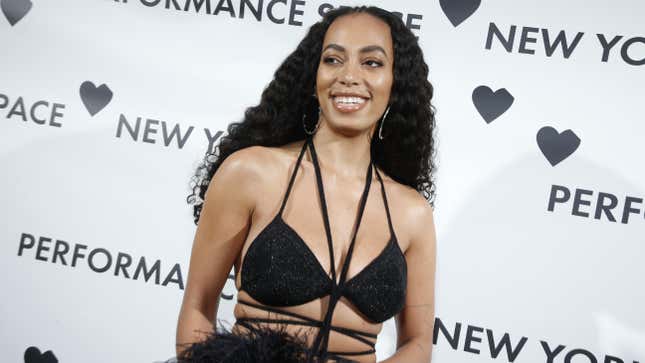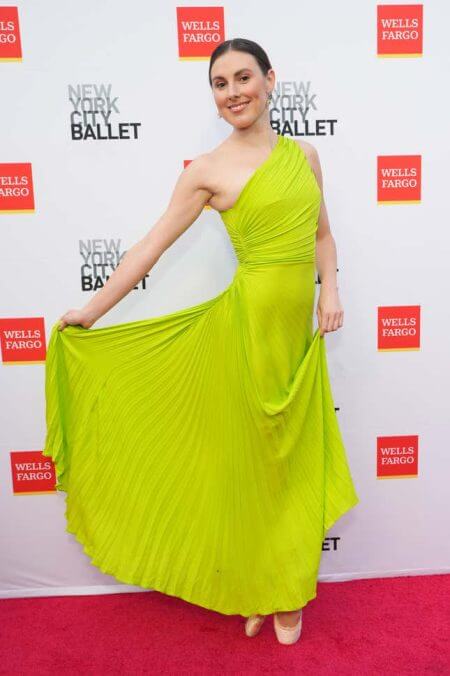Solange Knowles Breathed Life Into the New York City Ballet
The artist created her first original score for a ballet at New York City Ballet’s Fall Fashion Gala, and it attracted a whole new fan base of first-timers.
In Depth

Everyone tells you to arrive early to the New York City Ballet to avoid the last-minute flurry of anxious ticket-holders who missed the train or left their tickets at home or forgot that, yes, the David Koch Theater still requires masks indoors. On Wednesday night, however, the ballgown-ed and tuxedo-ed hordes outside the Lincoln Center were unavoidable, no matter how early you showed up. The lines spilled out onto the sidewalk, wrapping around the outside of the plaza, as people of all ages shifted back and forth, clasping their hands at their waistlines, antsy to go inside. NYC Ballet’s annual Fall Fashion Gala has always been a spectacle—a meeting of some of the greatest minds in fashion and dance—but this was something different. This was about Solange.
In August, the New York Times reported that City Ballet—one of the most prestigious and, at times, controversial ballet companies in the country—had commissioned Solange Knowles, the Grammy-winning visual and musical artist, to compose her first original score for a ballet company. The composition was set to premiere at the company’s 10th anniversary of its annual Fall Fashion Gala (the brainchild of longtime City Ballet board member Sarah Jessica Parker) in September, in addition to a slew of shows in October and May of 2023. Though longtime fans of Knowles clamored to get tickets to see her take on a new artistic endeavor, the announcement also drew excitement for another reason: Knowles would become just the second Black female composer to produce work for the City Ballet ever, and she seemed to be drawing a near inconceivable wave of young Black fans to the theater’s crushed velvet seats—the same seats once reserved for the upper crust of New York’s oldest money and the white nouveau riche.
In the lead-up to the show, I spoke to a few young people who were irked that Knowles’ debut—a major Black cultural moment within a historically white institution—had been reserved for the Fall Fashion Gala, meaning the majority of the best seats in the house would be occupied by City Ballet regulars, donors, and celebrities willing to shell out anywhere from $750 to $200,000 for the evening. But as the line snaked closer to the theater doors, it became clear there was nothing but a positive, reverberating buzz that only someone like Knowles could instill in a crowd of ballet-goers. Even as the general attendee line awkwardly brushed up against the gala’s outdoor cocktail hour, everyone seemed genuinely excited.
As I settled into my $84 seat in the middle of the fourth ring—the nosebleeds in the back of the theater four levels up—I scanned what looked to be a sold-out audience. Later, in Daily Mail and Page Six articles, I’d see that Kristin Davis, Laverne Cox, Claire Danes, Queen Latifah, and a bevy of top-brass fashion editors were also in attendance. I’d see that Beyoncé and Tina Knowles came to support Solange on her big night. I’d see that City Ballet principal dancer Tiler Peck graced the red carpet in a lime green Valentino gown, paired with her satin pointe shoes. But it’s not so much the evening’s star power that excited me. Rather, it’s the changing guard and the fourth ring of audience members beside me—those making the notoriously stuffy ballet look young, fresh, and alive.
-

-

-

-

-

-

-

-

-

-

-

-

-

-

-

-

-

-

-

-

-

-

-

-

-

-

-

-

-

-

-

-

-

-

-

-

-

-

-

-









































